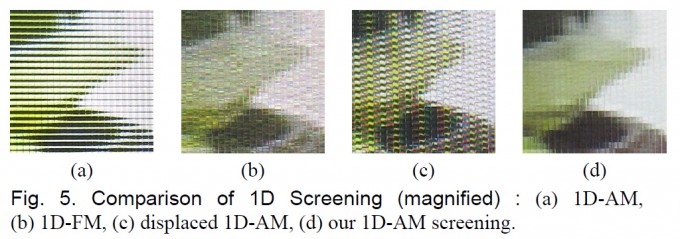Lenticular Printing: Using LightField Data and Halftone Screening for improved 3D Prints
Lenticular printing is the technology behind what most people know as “wiggle pictures”: An array of lenticular lenses is used to display different images depending on the viewing angle.
Since our two eyes have slightly different viewing angles themselves, lenticular printing can also be used to create 3D effects (More information on Wikipedia).
Hideki Yamazaki and Yasuhiro Takaki have recently published a new technique to improve the visual quality of lenticular prints: They sucessfully “reproduced the light space as a light field” using a new halftone screening process for full color prints. Displacing each series of dots independently for every primary colour, and then diffusing regularity by dividing each series of dots into a few fragments, they were able to remove common artifacts of lenticular prints, such as horizontal lines and gritty textures.
The result of what they call 1D-AM (one-dimensional AM screening) is a relatively smooth resulting picture.
The LightField data they used came from an ordinary camera which was moving along a straight rail while collecting “slices of the LightField ” (i.e. 48 parallax images).
You can find the publication abstract here: Printing 3D Light Field with 1D Halftone Screening (PDF)







Recent Comments